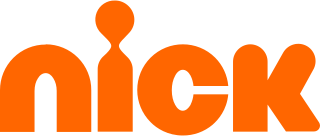Paramount Media Networks is an American mass media division of Paramount Global that oversees the operations of many of its television channels and online brands. Its related international division is Paramount International Networks.
NickMusic is an American pay television network and spin-off of Nickelodeon that mainly carries music video and music-related programming from younger pop artists that appeal to Nickelodeon's target audience, with some videos edited for content to meet a general TV-PG rating applied across the network's broadcast day, or replaced with a lyric video instead.
VIVA was a German free-to-air music television channel, first broadcast on 1 December 1993. The channel was intended to compete against MTV Europe and was the first German-language music TV channel, while MTV was only broadcast in English until the introduction of MTV Germany in 1997. It was also supposed to focus more on German music and pop culture while MTV only broadcast anglophone music by artists mostly from North America, the United Kingdom, Ireland and Australia.
TMF was a music video and entertainment channel in the United Kingdom and Ireland. The channel was owned by Viacom International Media Networks and was originally a Dutch channel. Formed after the two other TMF stations, which were based in mainland Europe, the channel was created to counter against EMAP's The Hits channel on the new free-to-air digital terrestrial television service Freeview in 2002.
Paramount Networks Europe, Middle East, Africa & Asia (EMEAA) is a division of Paramount International Networks which is fully owned by Paramount Global. The unit's headquarters are in Berlin, with additional offices in Madrid, Lisbon, Paris, Amsterdam, Milan, Dubai, Johannesburg & Lagos, Budapest, Warsaw, Singapore, Stockholm, Tokyo, Beijing, Manila, Copenhagen, Prague, Helsinki, and Hong Kong SAR. The company was originally founded under the name MTV Networks Europe in 1987.

Music Television Germany is a German language free-to-air television channel operated by Paramount Global. The channel launched on 7 March 1997 as MTV Central, as part of a regionalisation strategy by Paramount Global, then MTV Networks Europe.
Nickelodeon is a children's channel broadcasting in Denmark, Norway and Finland. It broadcasts programming from the similarly branded channels in the United Kingdom and the United States as well as a few locally produced programmes.

MTV2 Pop was a German music channel. It launched on 1 May 2001, taking over the transponder left by the analogue service of MTV UK and Ireland when it closed down. It replaced VH-1 Germany. The channel mainly focused on Europop and eurodance music.

VH1 was a European music television channel owned by ViacomCBS Networks EMEAA. It played a wide variety of music programs on a daily or weekly basis, and various VH1 original series.

Nick is a German free-to-air television channel for children, part of the international Nickelodeon brand. Originally launched in 1995, and relaunched in 2005, Nickelodeon is based in Berlin. The channel is available on subscription services and as an unscrambled, free-to-air (FTA) satellite signal. On 31 March 2010, the channel re-adopted the name Nickelodeon on air and online, in addition to the new Nickelodeon logo and graphical package being rolled out internationally at the time. Since then, the channel is also broadcast in English in addition to German on a secondary audio track.

Sky Ireland Limited is a subsidiary of Comcast-owned Sky and supplies television, internet and telephony services in Ireland.

Comedy Central is a German free-to-air channel owned by Paramount Networks EMEAA. It is distributed in Germany, Austria, and Switzerland and broadcasts many American and British imported television series as well as original programming. It launched on 15 January 2007 replacing former music channel VIVA Plus. Prior to its launch, Viacom had Nick Comedy, which was a timeshared channel with Nickelodeon Germany, airing from 9:15pm to 6:00am.
Nickelodeon is a Belgian television channel that is derived from the Dutch Nickelodeon. The channel started in the summer of 2009 when it got its own programming. Via the satellite, the Dutch version is still being broadcast.
Paramount International Networks (PIN) is the international division of Paramount Global. The division oversees the production, broadcasting and promotion of key Paramount brands outside of the United States. These brands include Paramount Network, Comedy Central, MTV, Nickelodeon, BET and Colors TV, as well as CBS-branded channels, which are co-owned with AMC Networks International. PIN also owns a 30% stake in the Rainbow S.p.A. animation studio in Italy until 2023, as well as a 49% stake in an Indian joint venture with domestic partner TV18, Viacom18.

HD+ is a premium high-definition (HD) satellite television service for German users, owned by HD PLUS GmbH, a subsidiary of SES based in Unterföhring near Munich, Germany.

MTV Music was a Polish 24h music and entertainment channel from Viacom International Media Networks Polska. The channel was launched on June 10, 2000 by the German VIVA Media AG.

Comedy Central is a Dutch pay television channel based on the American channel of the same name. The channel is available on cable, digital terrestrial, IPTV, and satellite operators in the Netherlands. It broadcasts many imports as well as original programming.
Astra 2E is one of the Astra communications satellites owned and operated by SES S.A., launched to the Astra 28.2°E orbital position on 30 September 2013 after a 10-week delay caused by launcher problems. The satellite provides free-to-air and encrypted direct-to-home (DTH) digital television and satellite broadband services for Europe and the Middle East.
Astra 2G is one of the Astra communications satellites owned and operated by SES, launched to the Astra 28.2°E orbital position on 27 December 2014, at 21:37:49 UTC from Baikonur Cosmodrome.








